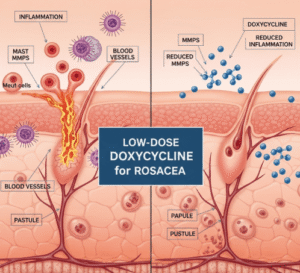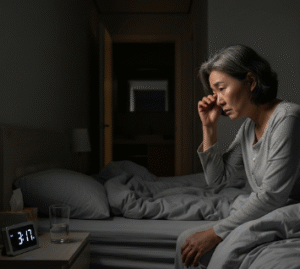Overview
Limping in children refers to an abnormal gait where a child has difficulty walking normally due to pain, weakness, or structural problems in the legs, hips, or feet. It is a common concern among parents and can indicate anything from a minor injury to a serious underlying medical condition.
In Korea, pediatric clinics and hospitals provide comprehensive evaluation and management for children presenting with limping. Prompt diagnosis is crucial because some causes, such as infection, trauma, or developmental disorders, require immediate intervention to prevent long-term complications.
Key Facts
- ➔ Limping can affect children of any age, though certain causes are age-specific.
- ➔ It may be painful or painless, depending on the underlying condition.
- ➔ Common causes include trauma, infections, inflammatory conditions, or congenital abnormalities.
- ➔ Early detection and treatment prevent permanent joint damage or mobility issues.
- ➔ In Korea, specialized pediatric orthopedics, rheumatology, and rehabilitation centers provide state-of-the-art care for limping children.
What is Limping in Children?
Limping in children is an abnormal gait pattern caused by difficulty bearing weight or moving normally:
- ➔ Pain-related limp: Often due to injury, infection, or inflammation in the leg, hip, or foot
- ➔ Neurological limp: Caused by weakness, coordination issues, or nerve disorders
- ➔ Structural or congenital causes: Such as leg length discrepancy, hip dysplasia, or foot deformities
- ➔ Clinical significance: Persistent limping requires careful evaluation to identify the underlying cause and prevent long-term musculoskeletal complications
What Symptoms Are Related To
Limping may be associated with a range of symptoms depending on the underlying cause:
- ➔ Pain or tenderness in the hip, knee, ankle, or foot
- ➔ Swelling or redness in the affected joint
- ➔ Fever or systemic symptoms if infection is present
- ➔ Reduced range of motion or stiffness
- ➔ Uneven leg length or abnormal posture
- ➔ Difficulty performing daily activities such as running or climbing stairs
- ➔ Visible changes in gait, such as dragging a leg or favoring one side
Recognizing these associated symptoms helps clinicians differentiate between minor injuries and serious medical conditions.
What Causes / Possible Causes
Several conditions can lead to limping in children:
- ➔ Trauma or injury: Sprains, fractures, or soft tissue injuries
- ➔ Infections: Septic arthritis, osteomyelitis, or transient synovitis of the hip
- ➔ Inflammatory conditions: Juvenile idiopathic arthritis or autoimmune disorders
- ➔ Congenital or developmental abnormalities: Hip dysplasia, leg length discrepancy, or clubfoot
- ➔ Neurological conditions: Cerebral palsy, peripheral neuropathy, or muscle disorders
- ➔ Tumors: Rarely, bone tumors may present with limping and localized pain
- ➔ Overuse or sports-related injuries: Muscle strain or tendonitis
Identifying the exact cause is essential to guide appropriate treatment and prevent long-term mobility problems.
When Should I See My Doctor
Seek medical evaluation if your child experiences:
- ➔ Limping that persists more than a few days or worsens over time
- ➔ Pain accompanied by swelling, redness, or warmth in joints
- ➔ Fever, fatigue, or systemic symptoms along with limping
- ➔ Noticeable limb length discrepancy or deformity
- ➔ Difficulty performing normal activities such as walking, running, or climbing stairs
- ➔ History of trauma with inability to bear weight
Prompt consultation allows early diagnosis and treatment, reducing the risk of complications.
Care and Treatment
Management of limping in children depends on the underlying cause:
- ➔ Rest and activity modification: For mild injuries or overuse-related limping
- ➔ Pain management: Analgesics or anti-inflammatory medications as prescribed by a pediatrician
- ➔ Physical therapy: Exercises to strengthen muscles, improve flexibility, and correct gait
- ➔ Orthopedic interventions: Casting, bracing, or surgical correction for fractures, congenital deformities, or severe joint issues
- ➔ Treatment for infection or inflammation: Antibiotics for septic arthritis or anti-inflammatory/immunosuppressive therapy for juvenile arthritis
- ➔ Monitoring and follow-up: Regular assessment to track recovery and prevent recurrence
- ➔ Parental education: Guidance on home care, safe activity, and recognizing warning signs
With proper care, most children recover fully and regain normal mobility.
Treatment Options in Korea
Korean hospitals provide specialized pediatric care for children with limping:
- ➔ Diagnostic evaluations: X-rays, MRI, ultrasound, blood tests, and gait analysis
- ➔ Specialist consultations: Pediatric orthopedists, rheumatologists, and neurologists
- ➔ Medical therapy: Pain relief, antibiotics, or anti-inflammatory medications depending on cause
- ➔ Surgical interventions: Correction of congenital abnormalities, fractures, or severe joint conditions
- ➔ Physical therapy and rehabilitation: Personalized programs to restore strength, flexibility, and gait
- ➔ Integrated multidisciplinary approach: Ensuring comprehensive care and early intervention for chronic or complex cases
Leading hospitals such as Seoul National University Hospital, Asan Medical Center, and Samsung Medical Center offer state-of-the-art diagnostics, pediatric care, and rehabilitation services, ensuring optimal recovery and long-term mobility.
In Summary: Limping in children can result from minor injuries, infections, inflammatory conditions, or congenital abnormalities. Early diagnosis and treatment in Korea can prevent complications, restore mobility, and ensure healthy development.
- ➔ Key Takeaway: Persistent or painful limping should never be ignored and warrants prompt medical evaluation.
- ➔ Action Point: Consult pediatric specialists for accurate diagnosis, treatment, and tailored rehabilitation.













